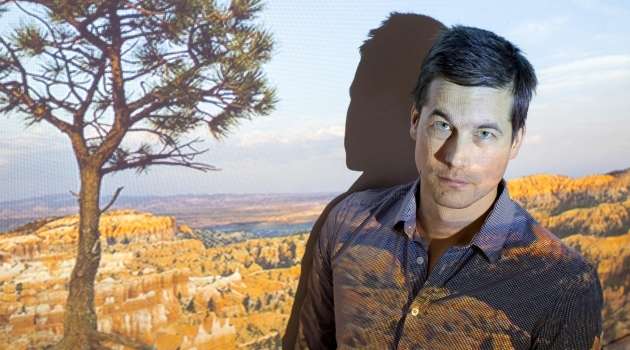Growing interest in geotourism

According to the Geological Survey of Sweden, (SGU), there is growing interest among the country's municipalities, organisations and other local initiatives in running geotourism and geoparks. Among those who have made the most progress to date is Siljansringen in Dalarna.
'Geotourism should by definition be sustainable. It's about trying to emphasise what's natural and so protecting areas from being exploited', says researcher and palaeobiologist Sebastian Willman of the Department of Earth Sciences.
All around Sweden there are visible traces of our diverse geological history, from both ice and tropical ages: dramatic landforms, meteorite impacts, oceans, volcanoes and mountain ranges. Some of this is visited, but much of it remains unexplored. But the number of local stakeholders who want to develop tourism initiatives based on geological sights is increasing, according to SGU.
In addition to contributing to greater geological knowledge, there is also the opportunity of promoting the local tourism industry and strengthening community identity.
'Many other countries have established larger numbers of geoparks ? geographically defined areas', says Sebastian Willman. In these areas it is not only the geological heritage which is highlighted but also local culture and traditions: how crops were and are grown, which local building materials and construction methods were used, which trades were primarily carried out by women and so on. The local society and economy both improve through the sale of local crafts, guided tours, food and accommodation.
The geoparks directive was established in the early 2000s by UNESCO with a focus on conservation, sustainable development and community involvement. In 2013 SGU started a network to encourage the emergence of geoparks in Sweden.
'The most advanced in the process is Siljansringen in Dalarna and the Meteorum project about the meteorite impact of 377 million years ago. Nearby there are many other interesting geological destinations such as gorges, rapids and waterfalls. There are also unique rocks and natural assets in the form of lichen, moss, plants and animal species. These are things you can also include when you embark upon geotourism.'
Sebastian Willman and the Department of Earth Sciences have participated in an EU funded project; Fostering Geotourism on the Central Baltic Islands. Together with colleagues in Estonia they produced six books and videos about geologically interesting places around the Baltic Sea.
'In order to increase the interest in geotourism, geologists and those with knowledge in the area need to highlight facts and say 'you have this near you'. Because when someone becomes aware of the environment they understand more readily why it is important and worth preserving.'
More information: For more information, see www.centralbalticgeotourism.eu/
Provided by Uppsala University





















